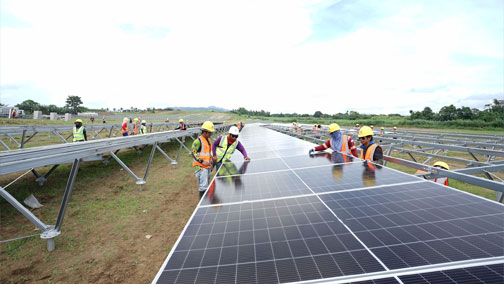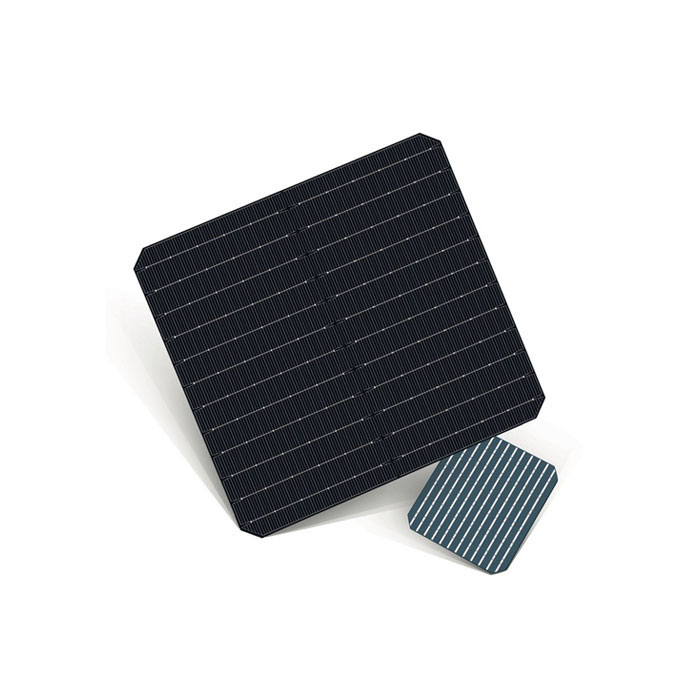 How to improve the power generation efficiency of solar stations?
Sep 26, 2023
How to improve the power generation efficiency of solar stations?
Sep 26, 2023
There are many factors that affect the power generation and efficiency of a solar station with the same capacity. Today SAIL SOLAR will lead you to have a studying.
1. Solar Radiation
When the conversion efficiency of solar panel is constant, the power generation of the solar system is determined by the intensity of solar radiation. Normally, the utilization efficiency of solar radiation by solar systems is only about 10%. Therefore, solar radiation intensity, spectral characteristics, and climate conditions must be taken into consideration. If the current year's power generation exceeds or falls short of the standard, it is likely that the overall solar radiation for that year deviates from the average.
2. Tilt angle of solar panel
The azimuth angle of solar panel is generally selected in the south direction to maximize the power generation per unit capacity of solar station.
As long as it is within ±20° of due south, it will not have much impact on the power generation. If conditions permit, it should be as far as 20° to the southwest.
The above angle recommendations are based on installation in the Northern Hemisphere, and vice versa for the Southern Hemisphere.
Tilt angles vary from place to place, and local installers are more familiar with the optimal tilt angle for components. If it is a pitched roof, in order to save brackets, many of them will be laid flat on the roof, regardless of the tilt angle, for the sake of beauty.
3. Solar panel efficiency and quality
There are many solar panel types to choose from on the market, such as polycrystalline silicon, monocrystalline silicon solar panel, etc. Different solar panels have different power generation efficiency, attenuation and quality.
The most important thing is must purchase them from regular channels at a reasonable market price. Only in this way can you ensure stable and reliable power generation for 25 years.
4. Solar panel matching loss
Any series connection will cause current loss due to the current difference of solar panels, and any parallel connection will cause voltage loss due to the voltage difference of solar panels. Losses may reach more than 8%.
In order to reduce the matching loss and increase the power generation capacity of the solar station, we should pay attention to the following aspects:
1)To reduce matching losses, try to use solar panels with consistent current in series;
2)The attenuation of solar panels should be kept as consistent as possible;
3)Isolation diode.
5. Temperature (ventilation)
Data shows that when the temperature rises by 1°C, the output power of crystalline silicon solar panel decreases by 0.04%. Therefore, it is necessary to avoid the impact of temperature on power generation and maintain good ventilation conditions for the solar panels.
6. Effect of dust
The crystalline silicon solar panel is made of tempered glass. If it is exposed to the air for a long time, organic matter and a large amount of dust will naturally accumulate. Dust falling on the surface blocks the light, which will reduce the output efficiency of the solar panels and directly affect the power generation. At the same time, it may also cause a "hot spot" effect on the solar panels, causing damage to the components. solar panel station must be cleaned in time.
7.Shadows, snow cover
During the site selection process of the solar solution, attention must be paid to the light shielding. Avoid areas where light may be blocked. According to the circuit principle, when solar panels are connected in series, the current is determined by the smallest solar panels Therefore, if there is a shadow on one solar panels, it will affect the power generation of this solar panels. Therefore, when installing a solar power station, you must not be greedy for large capacity. You must consider the area of the roof and whether there is any obstruction around the roof.
8. Maximum output power tracking (MPPT)
MPPT efficiency is a key factor in determining the power generation of solar inverters, and its importance far exceeds the efficiency of the solar inverter itself. MPPT efficiency is equal to hardware efficiency times software efficiency. Hardware efficiency is mainly determined by the accuracy of the current sensor and the accuracy of the sampling circuit; software efficiency is determined by the sampling frequency.
There are many ways to implement MPPT, but no matter which method is used, the solar panel power changes must first be measured and then react to the changes. The key component here is the current sensor. Its accuracy and linear error will directly determine the hard efficiency, and the sampling frequency of the software is also determined by the accuracy of the hardware.
9. Reduce line losses
In solar systems, cables account for a small part, but the impact of cables on power generation cannot be ignored. It is recommended that the line loss of the system's DC and AC loops be controlled within 5%. The cables in the system must be well prepared, including the insulation performance of the cable, the heat-resistant and flame-retardant performance of the cable, the moisture-proof and light-proof performance of the cable, the type of cable core, and the size and specification of the cable.
Therefore, in daily operation and maintenance, we need to check whether the lines are damaged and whether there is leakage or other conditions. Especially after every typhoon or hailstorm, it is essential to check whether the lines and connectors are loose.
10. Inverter efficiency
The solar inverter is the main component and important component of the solar system. In order to ensure the normal operation of the power station, the correct configuration and selection of the inverter is particularly important.
In addition to the various technical indicators of the entire solar power generation system and the product sample manual provided by the manufacturer, the configuration of the inverter generally needs to consider the following technical indicators: 1. Rated output power 2. Output voltage adjustment performance 3,Overall machine efficiency 4.Start-up performance.
There are not many daily environments that affect the efficiency of the inverter. Pay attention to installing the inverter in a cool place and keep the surroundings ventilated to facilitate the heat dissipation of the inverter. Especially in summer and autumn, normal heat dissipation can maintain the power generation efficiency of the inverter.
 How to improve the power generation efficiency of solar stations?
Sep 26, 2023
How to improve the power generation efficiency of solar stations?
Sep 26, 2023
 The difference between solar panel efficiency and solar cell efficiency
Jun 09, 2023
The difference between solar panel efficiency and solar cell efficiency
Jun 09, 2023